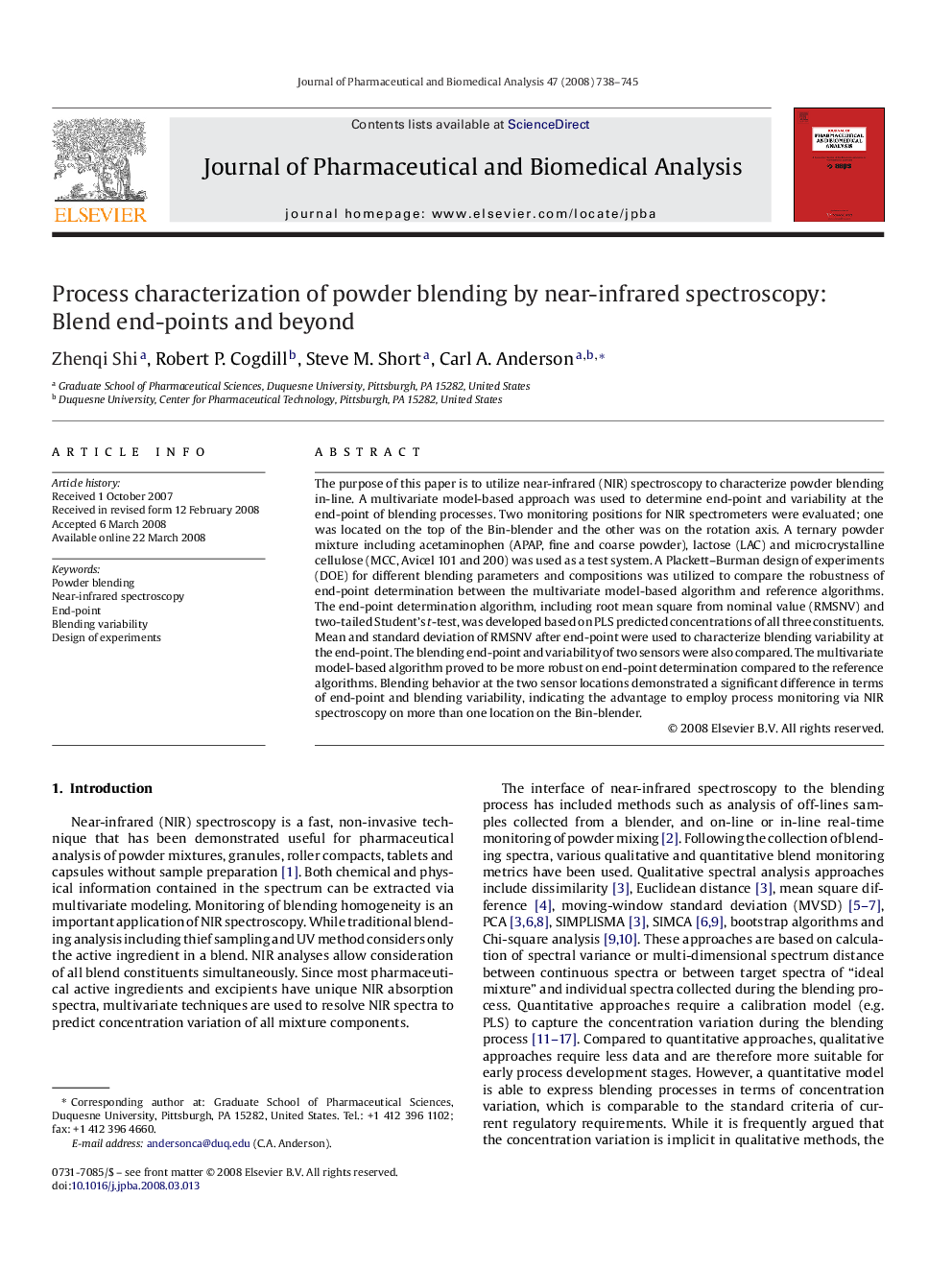| Article ID | Journal | Published Year | Pages | File Type |
|---|---|---|---|---|
| 1222978 | Journal of Pharmaceutical and Biomedical Analysis | 2008 | 8 Pages |
The purpose of this paper is to utilize near-infrared (NIR) spectroscopy to characterize powder blending in-line. A multivariate model-based approach was used to determine end-point and variability at the end-point of blending processes. Two monitoring positions for NIR spectrometers were evaluated; one was located on the top of the Bin-blender and the other was on the rotation axis. A ternary powder mixture including acetaminophen (APAP, fine and coarse powder), lactose (LAC) and microcrystalline cellulose (MCC, Avicel 101 and 200) was used as a test system. A Plackett–Burman design of experiments (DOE) for different blending parameters and compositions was utilized to compare the robustness of end-point determination between the multivariate model-based algorithm and reference algorithms. The end-point determination algorithm, including root mean square from nominal value (RMSNV) and two-tailed Student's t-test, was developed based on PLS predicted concentrations of all three constituents. Mean and standard deviation of RMSNV after end-point were used to characterize blending variability at the end-point. The blending end-point and variability of two sensors were also compared. The multivariate model-based algorithm proved to be more robust on end-point determination compared to the reference algorithms. Blending behavior at the two sensor locations demonstrated a significant difference in terms of end-point and blending variability, indicating the advantage to employ process monitoring via NIR spectroscopy on more than one location on the Bin-blender.
